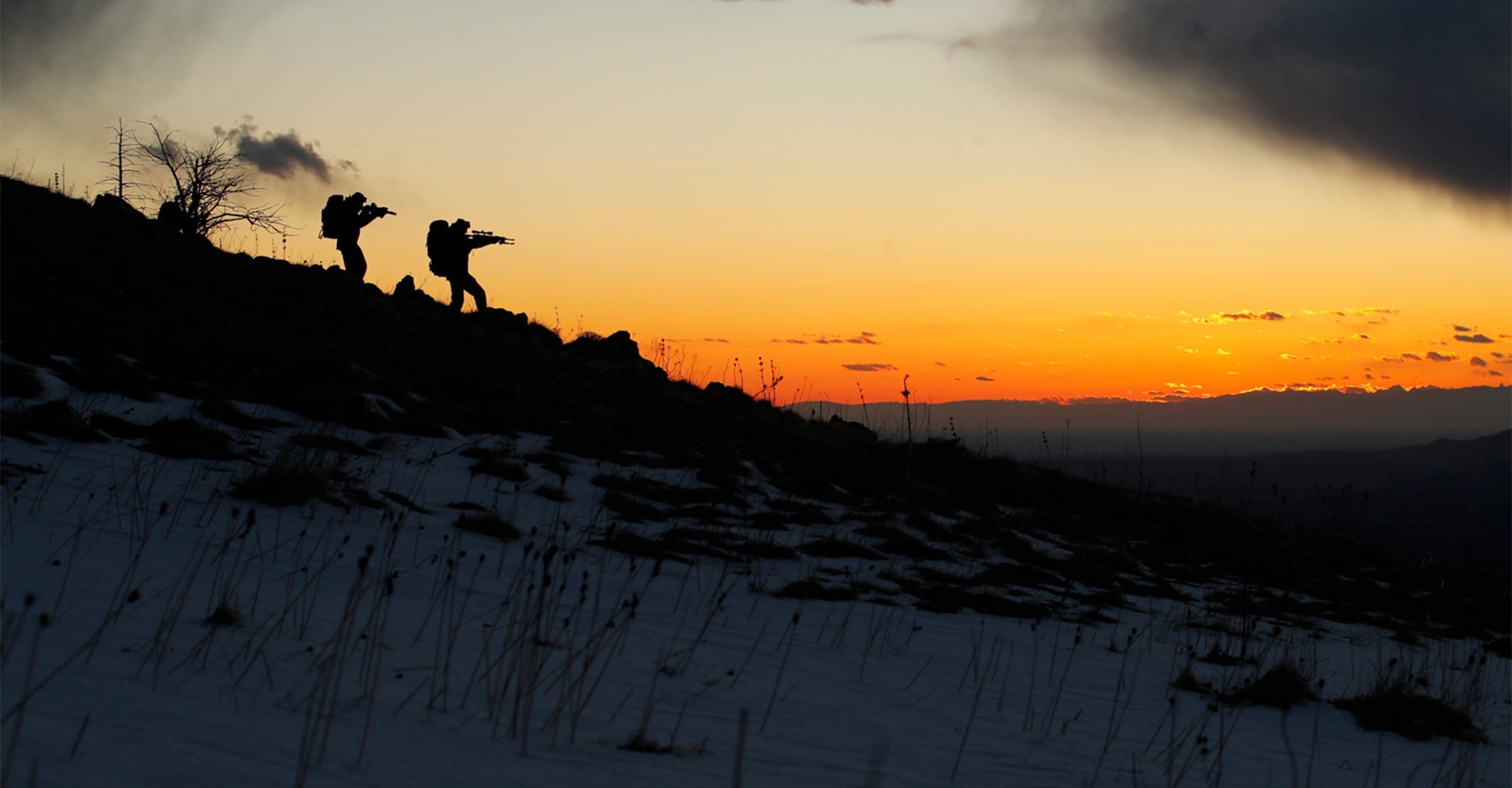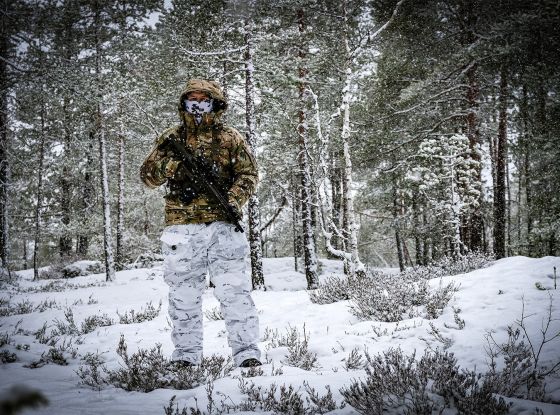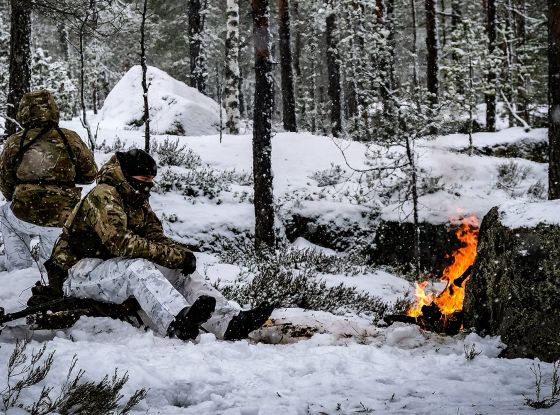Understanding cold-weather gear isn't just about the outer shell or how “warm” it feels—it’s about knowing how it performs under pressure: in snowstorms, during high-intensity movement, or in static, freezing conditions. Standards and testing procedures help take the guesswork out of your selection process.
In this blog post:
Below, we decode the most relevant international standards, explain what the numbers mean, and show how they apply to your tactical gear decisions.
EN 342 – Protection Against Cold
EN 342 is the most important European standard for evaluating clothing designed to protect against cold environments—especially for work or tactical settings involving low temperatures, wind, and moisture. The test simulates real-world cold exposure during movement, and optionally also evaluates static insulation.
Label format:
- Example: EN 342 0.327 (B), 3, 2
- Translates to:
- 0.327 = Icler (thermal insulation during movement), measured in m²·K/W (higher Icler = better insulation)
- (B) = tested with a standardized thermal base layer
- 3 = Air permeability class (1 = most breathable, 3 = most windproof)
- 2 = Optional waterproofness rating (1 = basic resistance, 2 = enhanced water resistance)
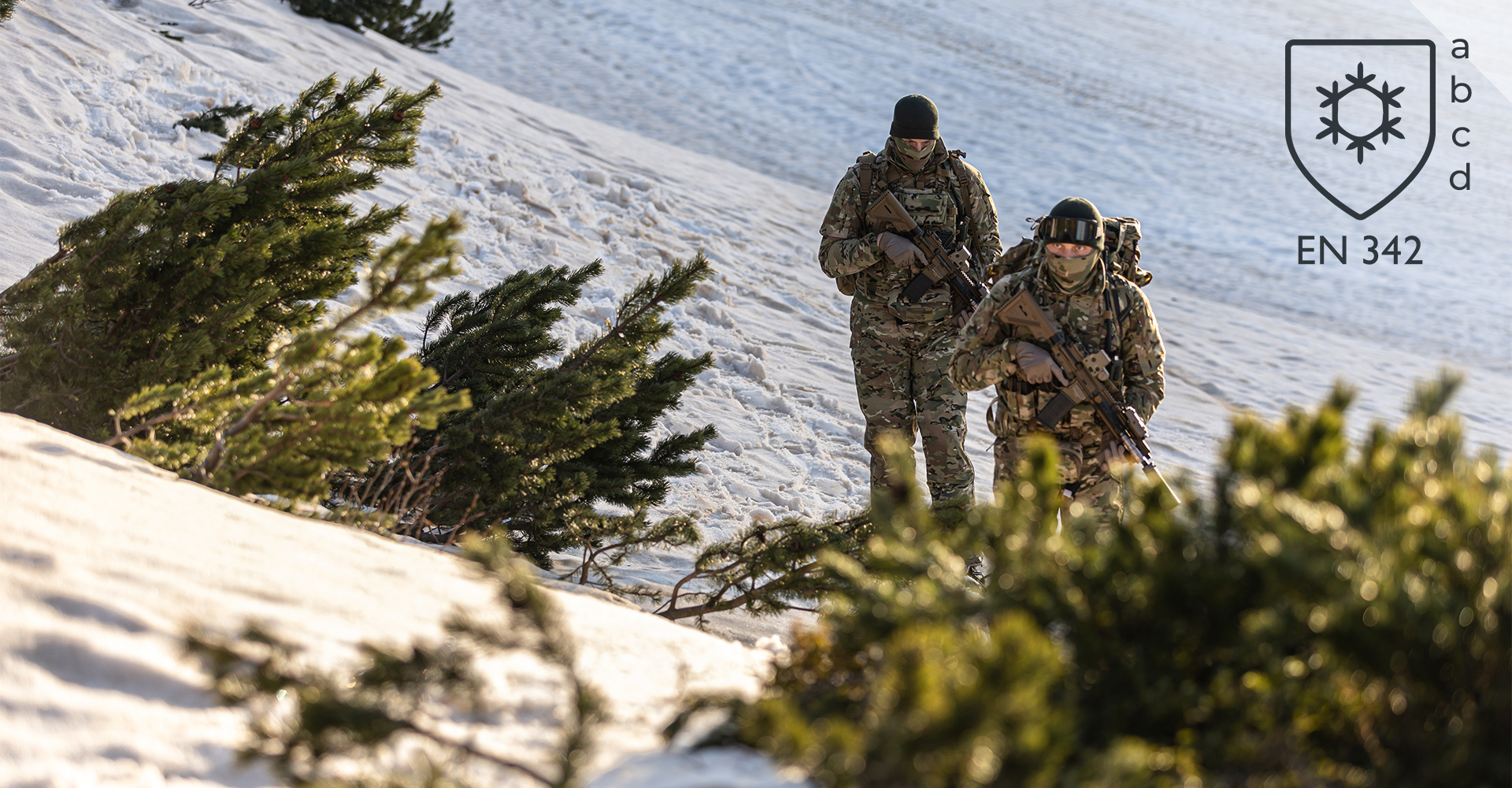
Tested parameters:
1. Icler (Thermal Insulation with Movement) – the core metric, showing how well the garment insulates during activity. B = tested with a standardized thermal base layer. Higher Icler = better insulation. Most tactical and utility operations are dynamic, so Icler is the most relevant number.
2. Icle (Without Movement) – optional; shows insulation at rest (e.g., surveillance).
3. Air Permeability – rated 1 (most breathable) to 3 (most wind-resistant). For cold-weather gear, Class 3 is preferred unless you're doing high-output work where breathability is more important.
4. Water Penetration Resistance – optional rating for water resistance (1 or 2).
Use when: You're comparing full cold-weather clothing systems designed for demanding tactical operations in freezing environments.
Thermal Protection Classes:
While the parameters tell you how the gear performed in a controlled test, the protection classes translate those numbers into practical use guidelines:
| Class | Recommended Use Temperature Range |
Typical Icler Values |
| 1 | 0°C to -5°C | ~0.25 – 0.30 m²·K/W |
| 2 | -5°C to -15°C | ~0.30 – 0.40 m²·K/W |
| 3 | -15°C to -40°C (or lower, depending on duration, wind, humidity) | >0.40 m²·K/W |
Pro Tip: Don’t just look at the insulation weight. A 145g/m² G-Loft fill with proper design and air retention can outperform a denser fill in a poorly constructed jacket.
Discover how your body responds to extreme temperatures and how the right cold weather gear keeps you in the fight.
EN 343 – Rain and Moisture Protection
EN 343 covers garments used in wet, cold, and windy conditions. It verifies that a jacket or pant is not only waterproof, but also allows sweat vapor to escape—critical for staying dry from the inside during high exertion.
Label format:
- Example: EN 343 4:2
- Translates to:
- 4 = Waterproofness class (1–4; 4 is best)
- 2 = Breathability class (based on Ret value)
- R = Indicates the finished garment was tested in the rain tower test (If the garment was not tested, R is replaced by X)
Water resistance and breathability are always tested and required (parameters “a” and “b”). The optional “R” marking refers to additional testing of the complete garment, not just the fabric.

Tested parameters:
- Water Resistance (WP) – measured using a water column test (in mm H₂O or Pa).
- Water Vapor Permeability (Ret) – how well sweat vapor escapes, same as ISO 11092. The lower, the better for active use.
Use when: You’re selecting outer layers for rain, snow, or wet tactical environments. Softshells and waterproof shells must balance both protection and sweat management.
Classifications for WP and Ret:
| Class | Water Column (WP) |
Breathability (Ret) |
| 1 | Low (< 800 mm) | Poor (Ret > 40) |
| 2 | Mid (800–5000 mm) | Moderate (Ret 25–40) |
| 3 | High (5000–10,000 mm) | Good (Ret 15–25) |
| 4 | Very High (>10,000 mm) | Excellent (Ret < 15) |
Pro Tip: Membranes can only do so much—use ventilation zips to dump heat when operating in high-humidity or high-output conditions.
Explore how the right rain gear keeps you dry and focused, and discover how waterproof laminates like GORE-TEX® work to keep you protected, breathable, and mission-capable—even in the worst weather.
ISO 11092 – Thermal Resistance and Breathability
This lab test is widely used to evaluate individual textile materials for their insulation and moisture management. Unlike EN 342, which tests full garments, ISO 11092 helps compare fabrics, linings, and insulation layers.
Label format: No strict classification, but results include:
- Rct (thermal resistance), in m²·K/W. Higher = warmer.
- G-Loft 80g/m² → 0.237 m²·K/W
- G-Loft 145g/m² → 0.397 m²·K/W
- Ret (moisture vapor resistance), in m²·Pa/W. Lower = more breathable.
- ePTFE membrane → Ret ≤ 5
- PU membrane laminate → Ret ≤ 9
Tested parameters:
- Rct (Thermal Resistance): – how well a material insulates by trapping warm air. Higher = warmer.
- Ret (Evaporative Resistance): – how well a material allows sweat to escape. Lower = more breathable. Classification criteria under the EN 343 standard.
Use when: You're assessing base layer materials, insulation panels, or shell fabrics before they’re stitched into garments.
Rct Value Guidelines:
| Rct Value Range | Thermal Performance | Recommended Use |
| Rct < 0.25 | Low insulation | Mid-layers or mild climate outerwear |
| Rct ≥ 0.30 | Good insulation | Cold-weather outerwear for active use |
| Rct ≥ 0.40 | High insulation | Extreme cold or static positions (e.g. sentry, sniper) |
Pro tip: Even a material with a great Ret value can underperform if the garment has poor venting or the external humidity is too high to allow vapor to pass through.
ASTM C518 is a U.S. standard focused on non-fabric insulation, such as foams, aerogels, or padding. It measures how much thermal resistance a material offers, regardless of garment construction.
Label format: Single R-value, usually in m²·K/W.
- Example: R = 2.5 m²·K/W
- May also appear in imperial units (e.g., R-7/inch)
Tested parameter:
- R (Thermal Resistance): – how well material blocks heat transfer between hot and cold surfaces. Higher R = more insulation per thickness.
Use when: You want to evaluate the potential of advanced materials like aerogels, synthetic fills, or foam layers used in tactical jackets, sleeping gear, or boots.
Typical Values:
| Material | R-value (approx.) | Equivalent Use Case |
| PU Foam | 2.0–2.5 m²·K/W | Boot liners, padded zones in cold gear |
| Wool (compressed) | 1.2–1.5 m²·K/W | Traditional base/mid-layers |
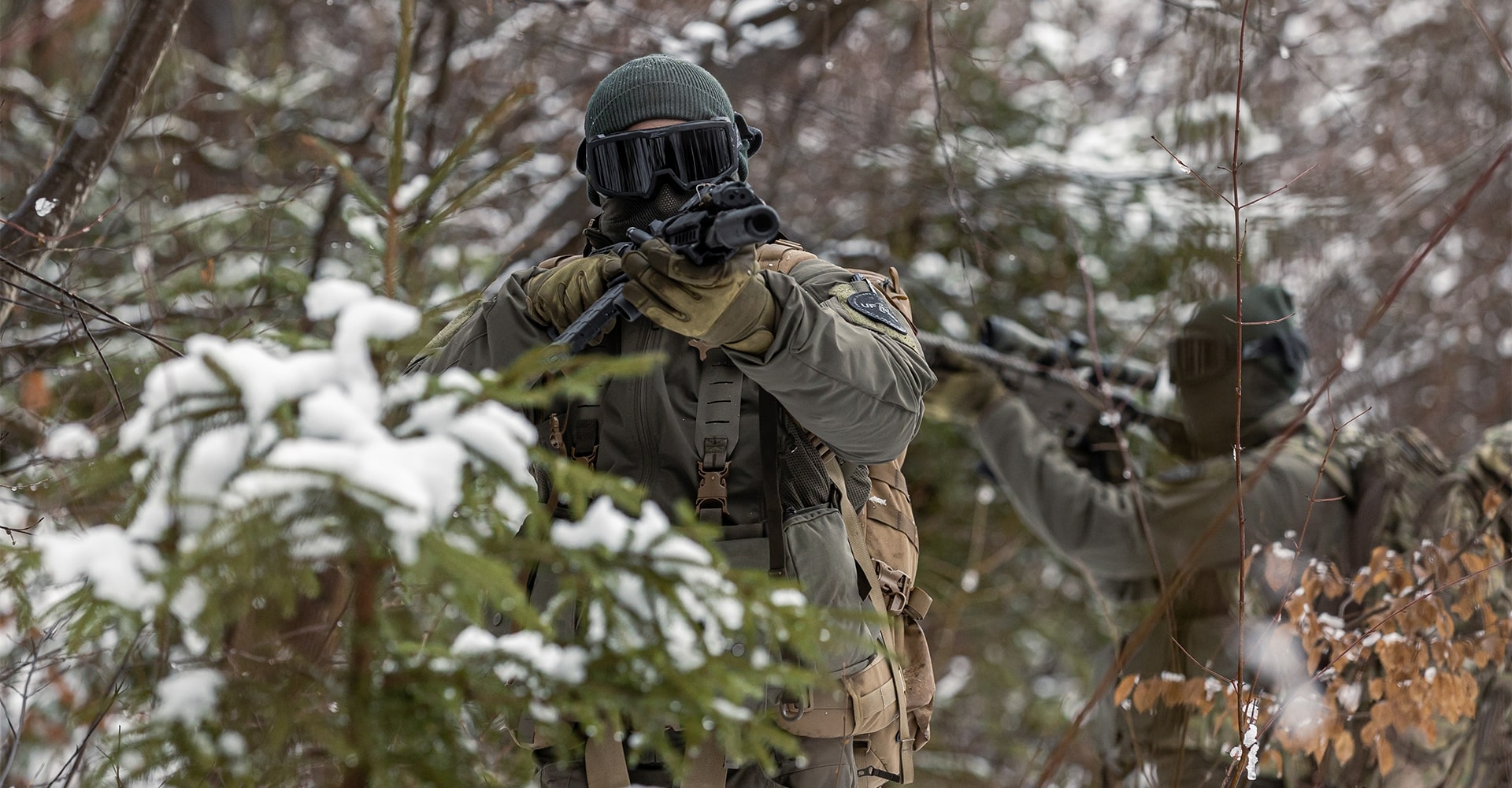
CLO Values – Thermal Comfort Index
CLO is a practical, user-friendly rating that tells you how warm clothing feels, rather than just how it performs in the lab. It helps match gear to expected environmental conditions and activity levels.
Label format: Simple number; sometimes approximated from Rct (1 CLO = 0.155 Rct)
- 1 CLO means that a person wearing the garment feels comfortable at 21°C (70°F) while at rest, in dry air, with no wind. This roughly equals wearing a shirt, trousers, and a light jacket indoors—like typical office wear.
Use when: You want to compare garments for warmth—especially when doing field outfitting or planning gear sets for a specific mission environment.
Classification for CLO:
| CLO | Feels Comfortable At | Use Case |
| 1 | 21°C | Light wear or base layers |
| 3 | 11°C | Mid-layers |
| 5 | 2°C | Lightweight insulated jackets |
| 7 | -7°C | Full winter operations |
| 10 | -22°C | Static operations in arctic cold |
Pro tip: Quilting and stitching reduce insulation performance—up to 7% less CLO—because they compress the fill and allow more heat to escape.
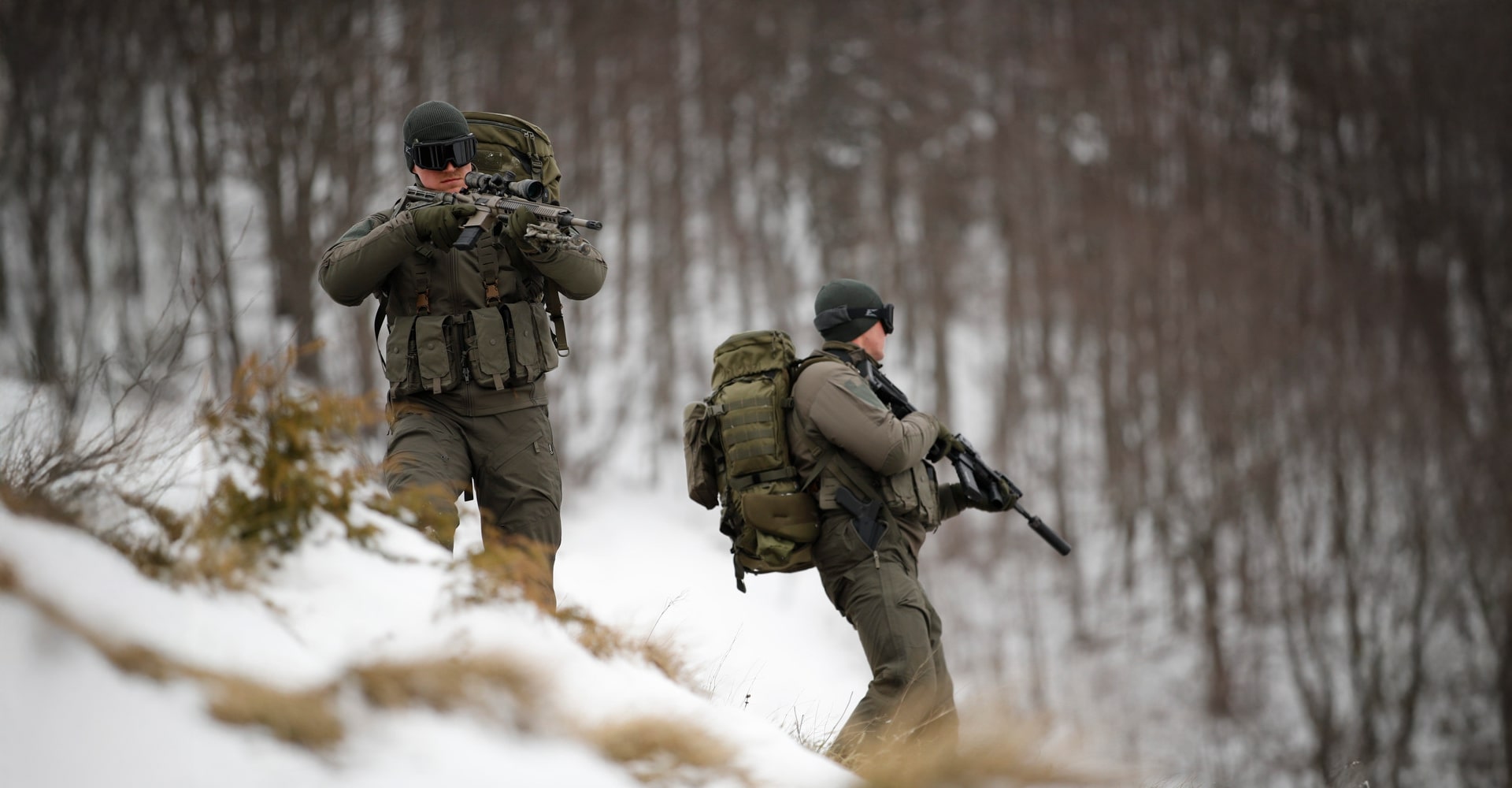
Summary Table: What to Look For When Buying Cold-Weather Gear
| Standard |
What It Measures |
Look For… |
| EN 342 | Protection from cold during movement and rest | Icler > 0.30 for winter gear; Class 3 rating for arctic readiness |
| EN 343 | Waterproofness and breathability (of complete garment and seams) | Class 4:1 or 4:2 for best rain + sweat protection in winter ops |
| ISO 11092 | Rct (thermal resistance) and Ret (moisture vapor resistance) | Rct > 0.3 for outerwear; Ret < 20 for breathable layers |
| ASTM C518 | R-value of bulk insulation materials (e.g., foam, aerogel) | Aerogel or PUR foam for ultrathin insulation or boots |
| CLO Rating | Comfort-based insulation rating | 1 CLO = mild; 5 CLO = cold; 8+ CLO = extreme cold (static ops) |
Final Tip: Interpreting the Labels
When reading product specifications:
- Check if the Ret, Rct, or CLO values are actually provided.
- For outerwear: combine high Rct, low Ret, and good DWR/membrane for optimal winter performance.
- Match gear to your activity level:
- High activity: prioritize breathability (Ret), moderate insulation (CLO 2–4)
- Static ops: prioritize thermal resistance (Rct/CLO > 5), windproof construction
- Look for EN 342/343 compliance on full garment systems, not just fabric claims.

